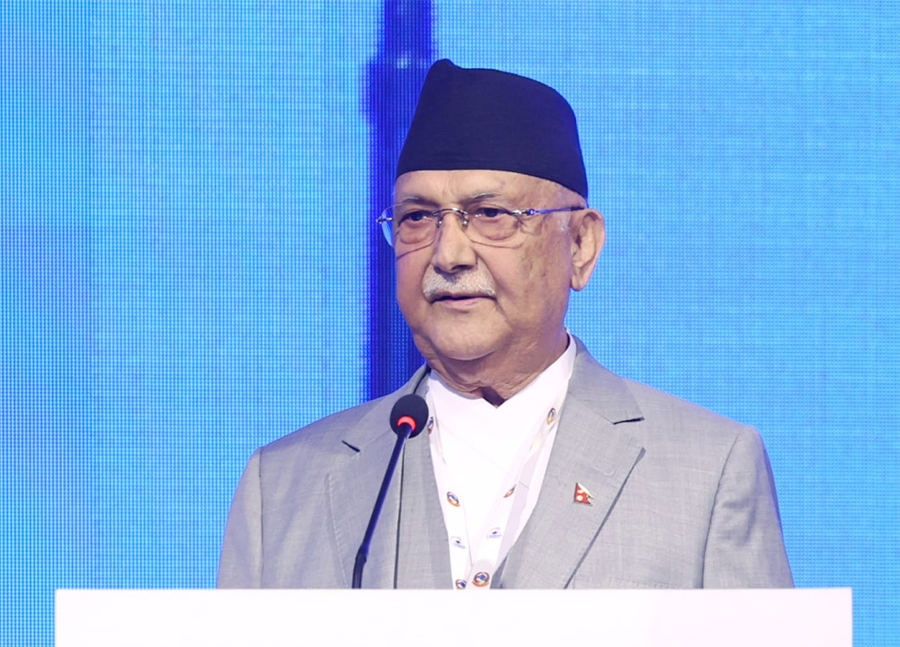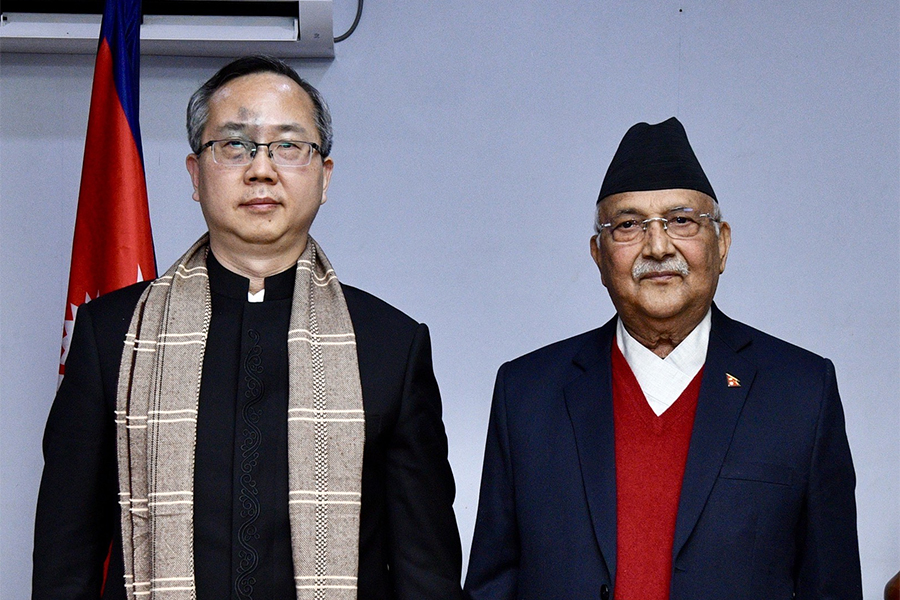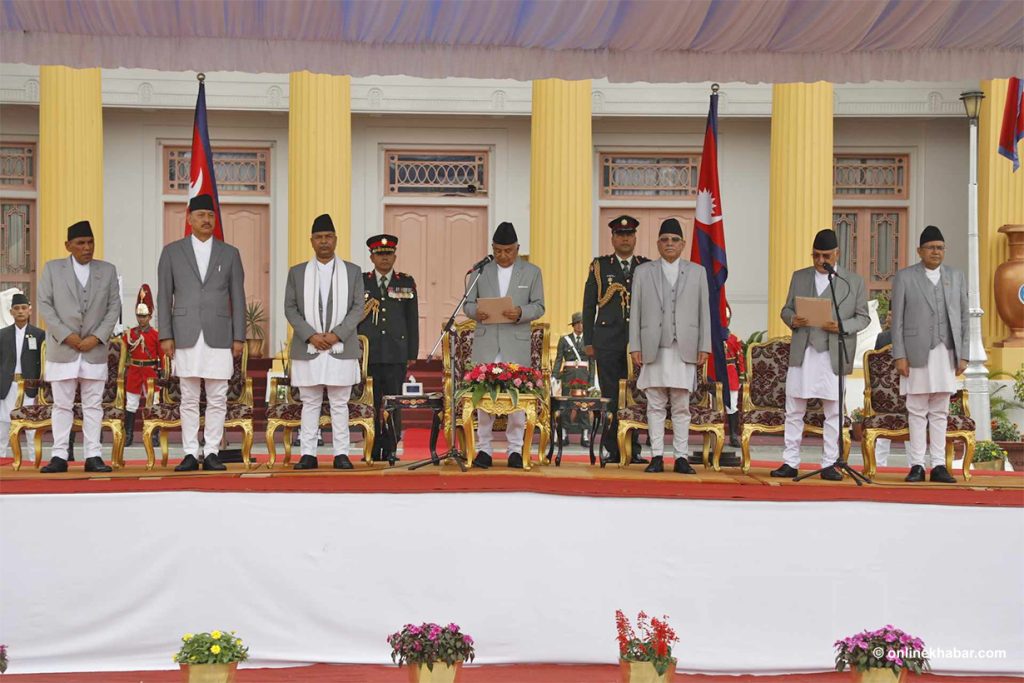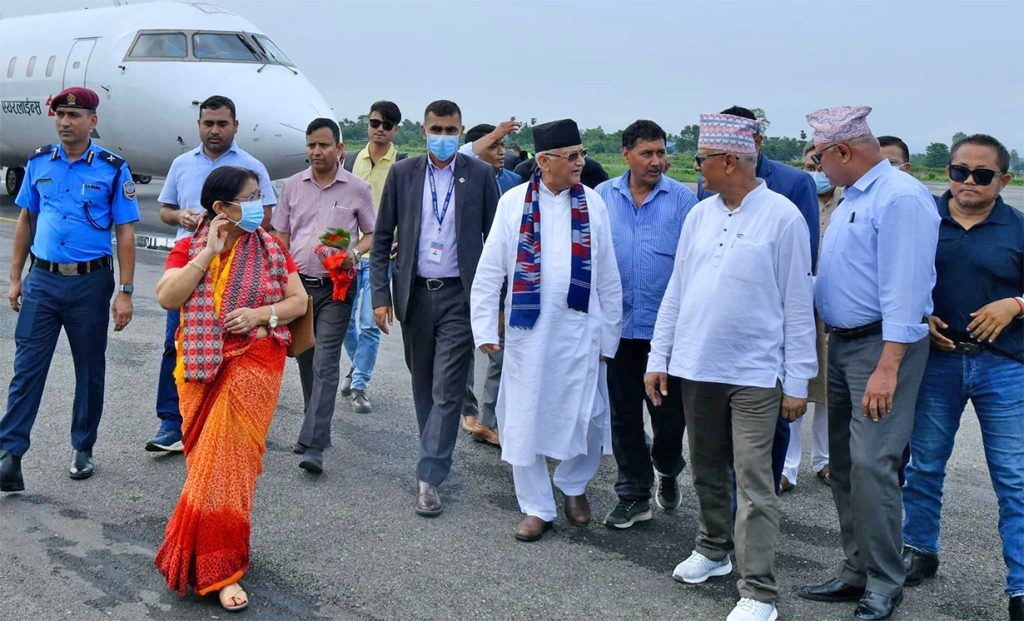
Near the dense Geuriya forest of Kamal rural municipality ward 5 in southeastern Nepal, there was a burial ground of local indigenous people. After the Armed Police Force settled its battalion on its northern side in 2002, several efforts were made to remove this.
But, the locals were against it as the place was linked to their existence. Back then as well, the locals did not want the police to stay there but due to the insurgency, they were compelled to remain silent. The burial ground of indigenous people started shrinking after police began living there.
In 2009, the then head of the battalion, Ganesh Thada Magar proposed to build a stadium dedicated to the indigenous people on the burial ground.
Over a decade down the line, the stadium has become a headache for Nepal’s opposition leader KP Sharma Oli.
Here, we explain why.
The history of Indigenous People’s Stadium

Then, stakeholders, family members of the buried individuals, local leaders, and government authorities discussed the proposal through several meetings over four months. Finally, they had an agreement to name the stadium Adivasi Janajati Rangasala (Indigenous People’s Stadium), which would be under the control of indigenous people.
The head of the Damak Area Administration Office, local bureaucrats of Topgachi and Lakhanpur, and representatives of political parties and indigenous people, all signed the agreement.
Afterwards, in the fiscal year 2010/2011, sitting finance minister Surendra Pandey allocated the budget of Rs 10 million for building the stadium. The contract to build the stadium was taken by the APF itself. According to the agreement, 845 bones from the burial site were gathered in one place and a pillar was built there to honour the indigenous people.
But, in the fiscal year 2011/2012, the budget for the stadium was not allocated. Again in the fiscal year 2012/2013, Rs 10.5 million was allocated. With that budget, the works of building parapets and fencing started but could not take complete shape. Until 2014, due to irregularities in budget allocation and work, the Indigenous People’s Stadium did not receive any priority.
The Oli connection
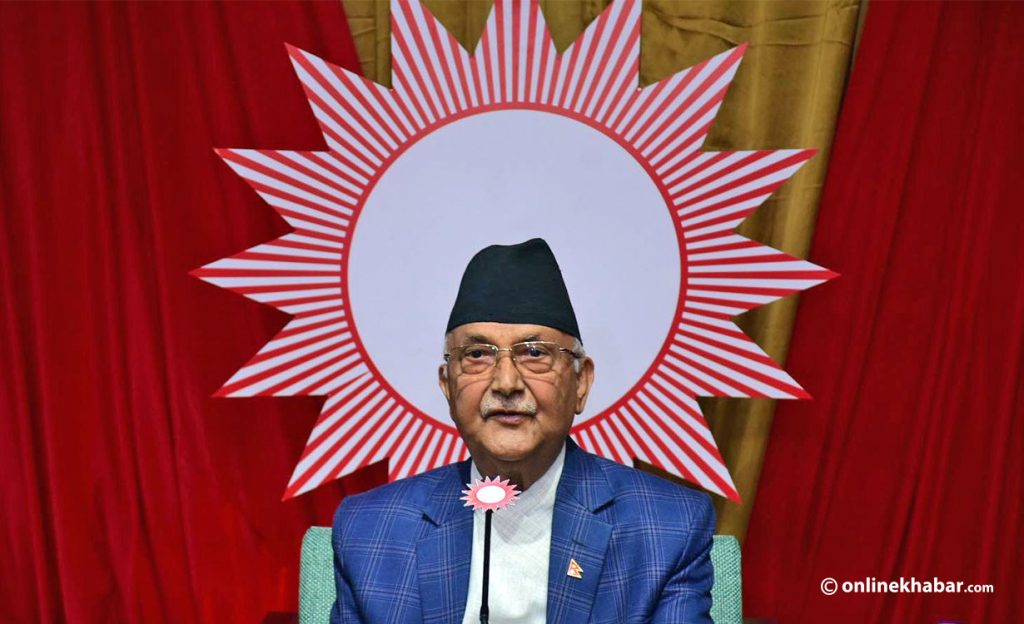
But in 2015, after KP Sharma Oli was appointed as the prime minister, the stadium was renamed Madan Bhandari Stadium after the late CPN-UML leader. Afterwards, the budget for the stadium was allocated regularly.
“Although the allocation of budget for the stadium was regular, the development did not address the identity of the local indigenous people. That’s why we posed obstruction,” says Dipen Bala Rai, the general secretary at Indigenous Stadium and Memorial Academy.
Following that, KP Sharma Oli shifted the project to build an indigenous people’s stadium to Damak-3 in his hometown.
Although the stadium is shifted to Oli’s hometown, nothing has been done there. The current government is also ignoring the project.
After the formation of the Sher Bahadur Deuba-led government, the locals even went to Kathmandu, asking to allocate the budget for the stadium. But, the federal government remained indifferent to the stranded Indigenous People’s Stadium.
The costly move
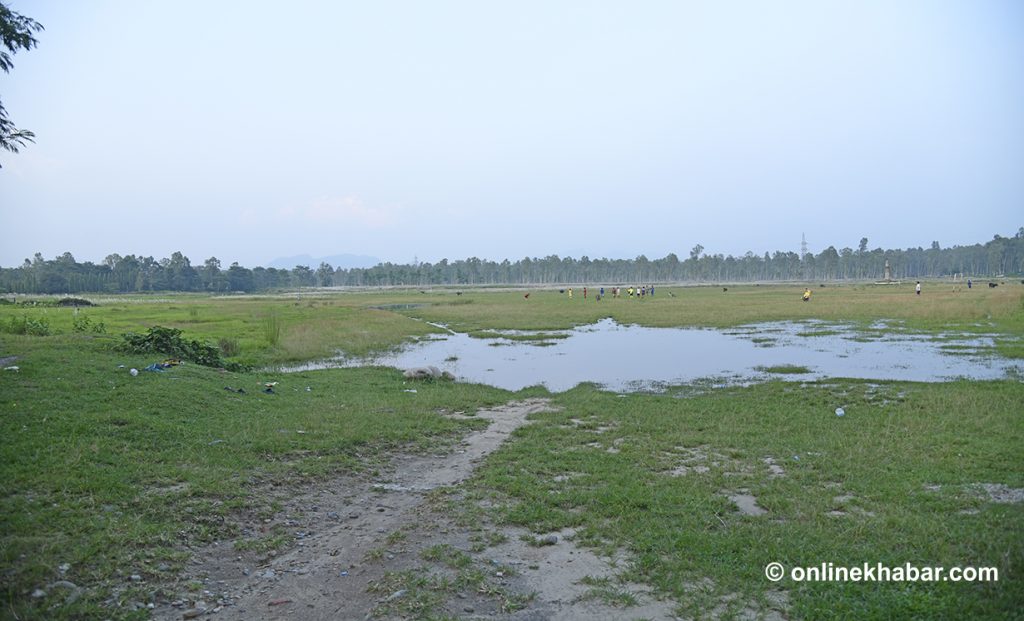
In the recently held local elections, KP Sharma Oli-led CPN-UML could not secure its seats in Kamal rural municipality, a place where the majority of voters are from indigenous communities. The main reason behind it was the stadium project that is in limbo.
“Due to the same issue, Oli can also face tough times in the upcoming parliamentary elections,” says Rai. “From changing the name of Phalgunanda Hall of Damak to politicising the Indigenous People’s Stadium, the leadership of CPN-UML has been attacking us.”
“It’s a humiliation against our ancestors,” he adds.
Meanwhile, the UML claims that the name of the stadium was changed with the consent of locals, but later, Nepali Congress politicised the issue.
“After the continuous protest, party chairman Oli convinced everyone regarding renaming the stadium and building another Indigenous People’s Museum on 6.69 acres of land,” says Hom Bahadur Thapa, a UML leader.
According to him, the Nepali Congress made the matter political agenda after finding some indigenous communities against the stadium.
With an expectation to get financial aid from a donor agency, the stadium was renamed after Madan Bhandari, he says.
But, Rai is not satisfied with this argument. “If naming the stadium after Madan Bhandari can garner financial support, why can’t it happen with the name Indigenous People’s Stadium? It clearly shows that they are not with the indigenous community,” says Rai.
Even many local leaders of that UML accept that their party has been unable to understand the sentiments of the public.
“We even had a neutral name. If the stadium was renamed Madan Bhandari Indigenous People’s Stadium, things would have been different,” says one leader of the CPN-UML.
This story was translated from the original Nepali version and edited for clarity and length.







